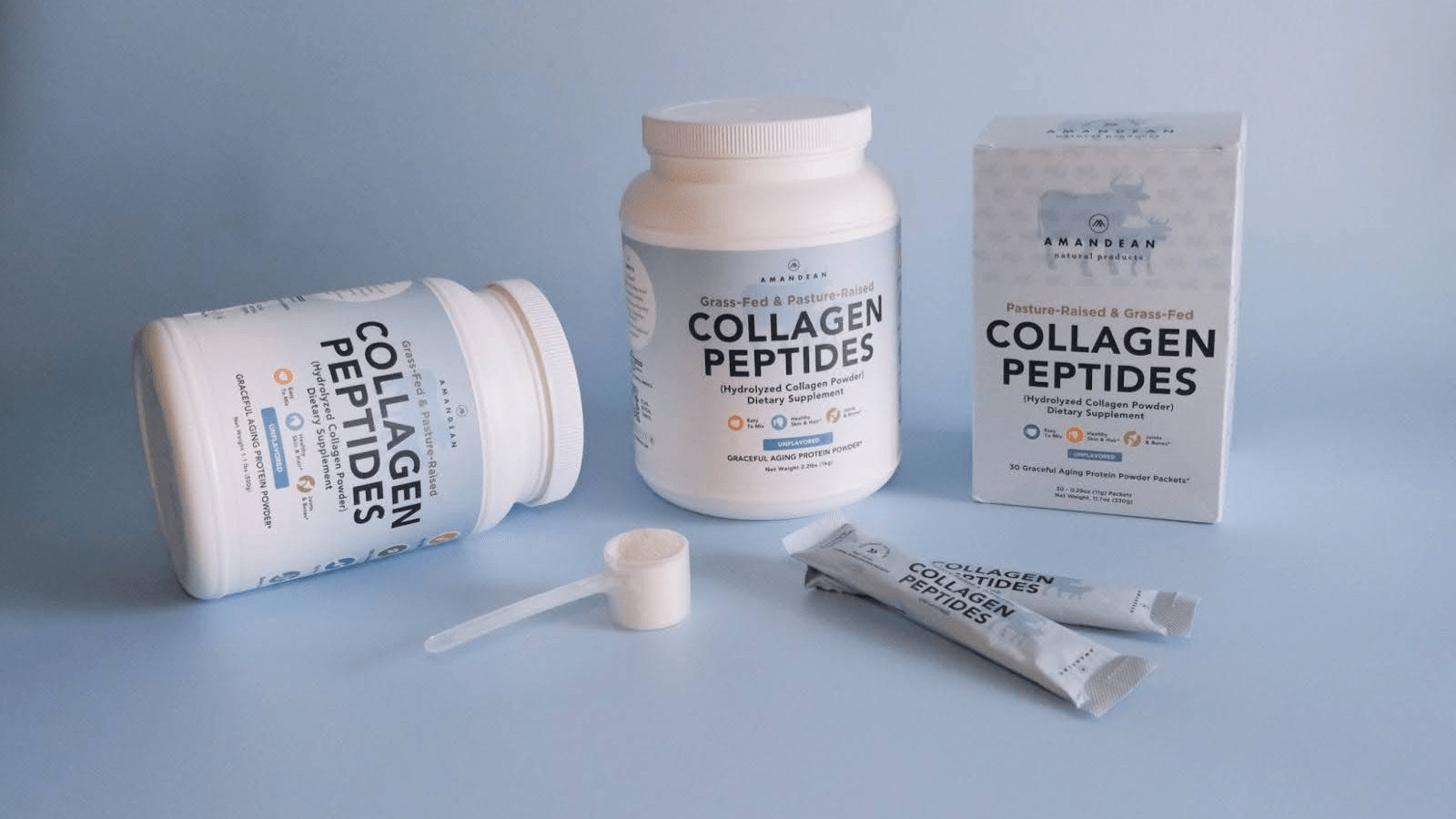Your Cart is Empty

November 26, 2019 8 min read
When it comes to skincare, it is safe to say that topical solutions, including lotions, serums, and face creams, represent the focal point in the routines of many people. However, as much as topical applications are recommended as an important element of skincare, conditions such as melasma require a much deeper approach - literally since we’re targeting the very structure of the skin.
With that said, today we’re focusing on some pretty powerful supplements, including glutathione and vitamin C, as well as collagen hydrolysate, which can not only aid in the management of melasma but also contribute to overall skin health and maintaining its youthful appearance. If you’d like to learn more about nourishing your skin from the inside out, keep reading.
The best way to define melasma is to view it as a pigmentation disorder, manifested through gray or brown patches mostly affecting the facial area. Besides the nose, upper lip, cheeks, and forehead, symptoms of melasma may also appear on other body parts, including shoulders and neck, as well as forearms.
While the exact cause of this skin condition is yet to be confirmed, it is believed that melasma is a direct consequence of excessive melanin production. So, what exactly is melanin, which may cause these patches of coloration? Melanin acts as a skin-protecting barrier in case of UV radiation, since it has been found to absorb and limit its damage. Besides acting as a photoprotective agent, melanin also has antioxidant and free-radical-scavenging properties.
Why is it then that such a beneficial skin component as melanin is believed to trigger melasma? Well, the issue lies not in melanin itself, but rather in the quantity of melanin produced, since overexposure to UV rays leads to excessive melanin production.

Therefore, the main hypothesis surrounding this skin condition is that the key factor in melasma development is indeed UV radiation which influences melanin production. However, the list of the factors to blame doesn’t stop there, which makes melasma a far more complex issue. A wide range of these factors includes pregnancy, contraceptives, thyroid dysfunction, certain topical and cosmetic products, systemic medication, heavy metals, and of course - genetics.
When addressing the actual manifestation of melasma, the first symptom that comes to mind is the appearance of colored patches. However, aside from epidermal pigmentation, certain cases of melasma also entail an extracellular matrix abnormality, such as solar elastosis, in 93% of cases. Solar elastosis is a well-known consequence of photoaging, triggering an excessive accumulation of elastic tissue. Furthermore, the fact that a photoaging-induced condition is often present in pathological cases of melasma goes to show that prolonged sun exposure indeed is one of the root causes of skin abnormalities.

The process of melasma development starts in the very structure of the skin, where collagen cells are degraded as a result of chronic UV exposure. The degradation of skin collagen further leads to a state commonly referred to as basement membrane disruption, which triggers excessive production of melanin. Therefore, when it comes to long-term management of melasma, securing the basement membrane balance seems to be the primary concern.
Given the complexity of this skin condition, it’s no wonder you’ve probably come across various approaches and strategies when it comes to managing melasma. Many of them focus on topical products like creams and serums that can be found at your local pharmacy. This kind of approach will mostly entail laser treatments, topical steroids, and cryotherapy, as well as different types of topical acids including kojic, ascorbic, and glycolic acid, to name a few.
And while a topical treatment could yield positive results, today we’re concerned with a more in-depth, straight-to-the-point approach that targets the very core of this issue and works from the inside out. Therefore, we’ll be discussing the role of antioxidants in the form of supplements when it comes to melasma management and skin health in general.
But before we dive into the role of supplementation in the management of this condition, it is worth noting that a combination of adequate topical products and all-natural supplements could be the best approach. This way, you’d be targeting the issue on both fronts.

A study conducted by Nagapan T.S. and colleagues suggests that UV radiation is linked to the production of reactive oxygen species (ROS), which may promote melanin production due to an increased level of oxidative stress. This is precisely where antioxidants, as ROS scavengers, come into play, preventing oxidative damage as well as UV-promoted melanin production.
In the world of antioxidants, glutathione is known as the mother of all antioxidants - regarded as the most powerful naturally produced antioxidant in the body. This low-molecular-weight antioxidant is considered vital in the process of detoxification, cleansing the body from harmful components such as heavy metals, pollutants, and drugs. Due to its protective role, glutathione has been recognized as one of the main natural alternatives in melasma management. It is also important to mention the 74th Annual American Academy of Dermatology meeting in Washington in 2016 when glutathione supplementation was proclaimed not only safe but effective when it comes to melasma management.
B. Handdog and colleagues performed an open-label, single-arm trial examining the efficacy of oral glutathione supplementation in skin whitening and melasma management. Namely, thirty female participants took glutathione supplementation every day for 8 consecutive weeks. After only two weeks, a significant decrease in melanin levels was noted.
Take our quiz and find which supplements your body is craving.

And yet another study concerned with glutathione’s role in this skin issue confirmed its skin whitening effects. This study included 60 participants faced with the issue of melasma, some of whom received a daily 500mg dose of glutathione for 4 weeks. Similar results were noted in all participants who consumed oral glutathione - melanin indices were substantially reduced.
According to a study focused on oral supplementation of glutathione, it’s been confirmed that there’s an ability of glutathione supplements to elevate natural levels, thus inhibiting melanin content in the skin. Accordingly, glutathione has been found to manage melanin deposition in the basal layer of skin, while also acting as a photoprotective agent, the aforementioned study concludes.
When it comes to its anti-melanogenic effect, glutathione acts on a molecular level by either binding with tyrosinase (the most important enzyme in melanogenesis), combatting free radicals and peroxides, or inhibiting tyrosinase.

Perhaps you aren’t familiar with the role of glutathione in skincare, but we’re quite positive that you have stumbled upon vitamin C skin serums and creams. Skin-loving benefits of vitamin C were established long before the beauty industry escalated into what it is today, so it’s no wonder it has become one of the staples of skincare. While we could dedicate the entire article solely to vitamin C benefits, especially concerning skin health, we’ll keep the focus on its scientifically-backed potential in melasma management.
Vitamin C is yet another powerful antioxidant that, unlike glutathione, cannot be manufactured naturally - hence an even bigger necessity for supplementing. According to a study conducted by N. Bagherani et al., vitamin C has been found to interact with both tyrosinase enzymes and copper ions, which represent the core issues of melasma. Furthermore, vitamin C has been known to combat free radicals, preserve skin quality, and reduce oxidative effects in melanin development.
What’s more, a study conducted by H. Zhao finds vitamin C effects comparable to those of chemical treatments of melasma. In this study, there was no difference between the results of vitamin C versus tranexamic treatments, suggesting that supplementing with quality Liposomal Vitamin C may be considered as effective as expensive chemical skin treatments.

Even though collagen is not an antioxidant, but a protein, it is still impossible not to mention it when discussing skin health. Collagen is the pivotal structural protein, largely present throughout the human body, including muscles, joints, tendons, bones, cartilage, and of course - skin. In fact, collagen accounts for an entire third of the total protein in mammals, a study on fibrous proteins of the matrix suggests.
As far as collagen’s role in skin health is concerned, it regards skin hydration, elasticity, and texture, significantly decreasing wrinkles and improving skin resilience, a study conducted by H. B. Pyun et al. states. When it comes to melasma management in particular, we could say that the role of collagen is twofold.
Collagen has been found to play an important role in melasma management by helping the basement membrane (which has been compromised by UV radiation) regain optimal levels. By restoring the balance, collagen treatment potentially decreases the chance of melasma recurrence. On the other hand, all-natural collagen supplements have also been found to reduce the effects of photoaging, including wrinkling, laxity, and thickening, as well as skin pigmentation.
Moreover, collagen supplementation has also been shown to combat other symptoms of UV radiation, including abnormal elastic formation. The way collagen influences skin structure is by maintaining its barrier managing its hydration and recovering damaged collagen fibers.
As we’ve mentioned, melasma truly is a complex condition that may be influenced by a wide range of factors, including poor lifestyle choices and genetics. However, what lies at the core of melasma seems to be UV radiation, hence the mention of anti-photoaging, and anti-melanogenic supplements in this article. Each of the aforementioned powerful supplements plays a remarkable role in melasma management, especially collagen, the oral consumption of which has been found to stimulate hyaluronic acid production, dermal cell proliferation, and collagen synthesis. For more all-natural supplements, make sure to visit our online store.

October 17, 2025 8 min read
Find out why creatine is better for vegans! Boost your wellness game and unlock peak performance with Amandean's premium supplements today.

October 16, 2025 7 min read
Learn whether collagen in coffee is just another wellness fad. Examine the facts, benefits, and how to use collagen in coffee for beauty and joint support.

September 22, 2025 9 min read
Unlock the full benefits of creatine for women. Boost energy, beauty, and brainpower with Amandean’s clean formulas.